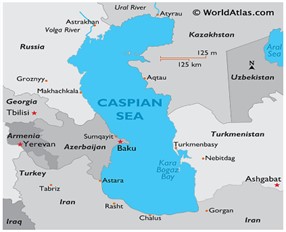|
Other Important News
|
|
Pradhanmantri Sangrahalaya
- The Pradhanmantri Sangrahalaya, located in Teen Murti Marg, New Delhi, is a part of Nehru Memorial Museum and Library.
- The digital museum was a tribute to every Prime Minister of India since Independence, and a narrative record of how each one has contributed to the development of our nation.
- It was inaugurated by PM Narendra Modi on April 14, 2022.
|
|
MAITRI – II Station in Antarctica
- India aims to set up a new research station in Antarctica near the Maitri station in the eastern part of the icy continent by 2029.
- The existing Indian research station, Maitri is very old, is imperative to build a new research station.
- Dakshin Gangotri, India's 1st research station in Antarctica, was commissioned in 1983 had to be abandoned in 1989 after being submerged in snow.
|
|
Black Tigers
- Black tigers are a rare color variant of the Bengal tiger. They are not a separate species or subspecies of tiger.
- Their all-black color is due to pseudo-melanism, a condition that causes thick stripes that make the tawny background barely visible.
- Black tigers are only found in India's Similipal Tiger Reserve which also has the highest rate of black tiger sightings in the world.
Similipal Tiger Reserve
- It is a national park and tiger reserve located in the Mayurbhanj district of Odisha, that gets its name from the red silk cotton tree, "Simul".
- It has been designated as a tiger reserve in 1956 and brought it under Project Tiger in 1973.
- It is a part of the UNESCO world network of Biosphere Reserve.
|
|
“Paat-Mitro”
- The Ministry of Textiles launched “Paat-Mitro”, a mobile application, developed by Jute Corporation of India Limited (JCI) during ‘Jute Symposium’ recently.
- The app is to support jute farmers and provides information about agronomy and Minimum Support Prices, as well as the latest agricultural practices.
- It also includes information about jute category standards and Jute-ICARE (Jute- Improved Cultivation and Advanced Retting Exercise).
|
|
Competition Commission of India (CCI)
- Competition Commission of India has selected Ansuman Pattnaik as the new head of its investigation’s unit recently.
- The Competition Commission of India (CCI) is a statutory body within the Ministry of Corporate Affairs.
- It was established in 2003, but became fully functional in 2009.
- The CCI aims to establish a competitive environment in the Indian economy by engaging with all stakeholders, the government, and international jurisdiction.
|
|
Winter Solstice
- The Winter Solstice is a phenomenon when the Northern Hemisphere is tilted furthest away from the sun, resulting in the longest night and the shortest day of the year.
- It occurs annually on December 21 or 22. It marks the 1st day of winter.
|
|
Caspian Sea
- The Caspian Sea is the world's largest inland body of water, located between Asia and Europe, and is shared by Azerbaijan, Iran, Kazakhstan, Russia, and Turkmenistan.
- The Caspian Sea is a landlocked sea and is also known as the Mazandaran Sea.
- It lies to the east of the Caucasus Mountains and to the west of the vast steppe of Central Asia.
- Baku is the largest port on the Caspian Sea and the largest capital city on the southern shore of the Absheron peninsula.

|
|
Volcanic eruption in Papua New Guinea
- India recently sent relief material worth $1 million for the people affected by a volcanic eruption in Papua New Guinea.
- A major volcanic eruption of Mount Ulawun in Papua New Guinea resulted in widespread damage and destruction in the island nation.
- Papua New Guinea sits on the Pacific “Ring of Fire”, an arc of seismic faults around the Pacific Ocean where much of the world’s earthquake and volcanic activities occur.
|
|
Sumatran 0rangutans (Pongo abelii)
- 3 trafficked Sumatran orangutans were sent back from Thailand to Indonesia recently as part of a joint effort between the countries to tackle the illegal wildlife trade.
- The Sumatran orangutan (Pongo abelii) is a species of orangutan that lives in the northern part of the Indonesian island of Sumatra.
- They are the largest non-human primates in Asia and the largest arboreal primates.
- Conservation Status
- IUCN - Critically Endangered
- CITES - Appendix I
|
|
‘Systematic Voters Education and Electoral Participation’ (SVEEP)
- Systematic Voters' Education and Electoral Participation (SVEEP) is a program by the Election Commission of India.
- It aims to educate voters, spread awareness, and promote voter literacy since 2009.
|
